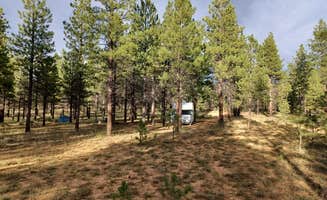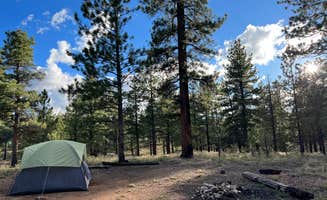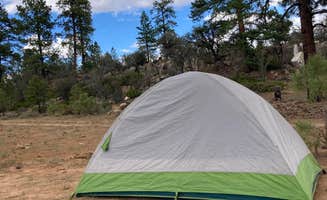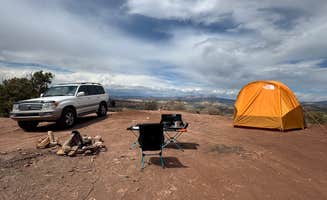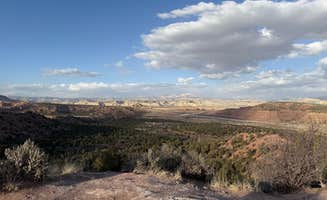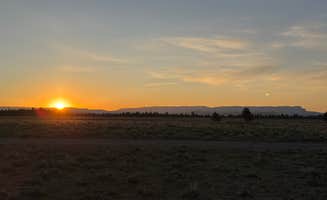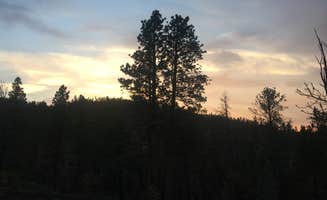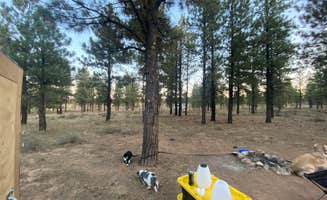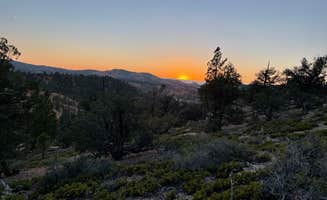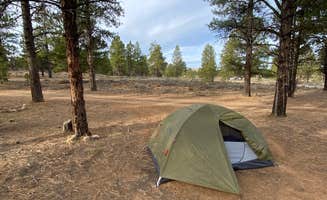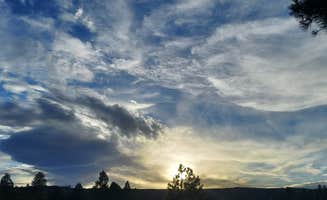Dispersed camping near Tropic, Utah offers several free options throughout Dixie National Forest at elevations between 7,500-8,500 feet. Summer temperatures typically range from 70-85°F during the day while dropping to 40-50°F at night. Most rustic camping areas require visitors to drive unpaved forest roads ranging from 1-5 miles from highway access points, with varying road conditions dependent on recent weather patterns.
What to do
Mountain biking on Thunder Mountain Trail: Located near Tom Best Spring Road FR117 Dispersed, this trail offers moderate difficulty riding through unique terrain. One camper noted, "Close to Bryce Canyon and easy access to Thunder Mountain trail loop, awesome moderate mt biking trail."
Wildlife viewing at dawn: Early mornings at Dave's Hollow Designated Dispersed Camping provide excellent opportunities for deer sightings. According to a camper, "Many deer and birds. Bugs also are present." Another visitor mentioned, "We saw deer walking around our tent area at night."
Stargazing without light pollution: The remote setting of FR3623 Dispersed creates optimal night sky viewing conditions. A visitor shared, "The stars were gorgeous and plentiful and we witnessed a meteor shower in late May."
Visit Red Canyon Visitor Center: Located within a 15-minute drive of most dispersed sites, this less-crowded alternative to Bryce offers similar geology. As one camper put it, "Very similar to Bryce Canyon NP geology but you can hike with your dog, ride a Mt bike and not have to pay a NP entry fee."
What campers like
Privacy between sites: FS #117 Rd Dispersed Camping offers significant space between camping areas. One camper noted, "There are dozens and dozens of spots down this road... we still had at least 75 yards between us and the next person."
Cell service for remote workers: Unlike many wilderness areas, most dispersed sites maintain connectivity. A camper at Great Western Trail Dispersed reported, "Verizon cell service was excellent. We found a spot a mile up the road that we liked."
Pre-established fire rings: Most sites contain stone fire rings from previous visitors, eliminating the need to construct new ones. According to a visitor, "Each spot has a fire site too. Fire levels were high when I went so I was unable to start a fire but I'm sure it's nice in the winter."
Flat parking pads: Many sites feature level ground suitable for vehicle camping without extensive setup. A camper at Dave's Hollow mentioned, "Exceptionally large spots, levelled, sand/stone, with a firepit made of stones."
What you should know
Variable road conditions: Access roads can quickly deteriorate with precipitation. A reviewer at Tom's Best Spring Road Dixie National Forest warned, "Roads to dispersed sites are unpaved dirt roads that may present challenges during wet conditions."
No facilities whatsoever: Prepare to be completely self-sufficient. A camper confirmed, "No bathrooms on site as noted, however, a rest area is a mile down the road and it's clean and has running water."
Seasonal closures: Winter and early spring access can be restricted due to road conditions. One visitor reported, "It's a beautiful area but with the recent weather the road into the camping area was closed. Very wet and slick mud."
Dust issues during dry periods: The loose soil creates dusty conditions when vehicles pass. One camper noted, "The worst thing about it is the dryness of the dirt, making it a bit of a dust bowl when the wind kicks up."
Tips for camping with families
Arrive by mid-afternoon: Prime spots fill quickly during peak seasons. One visitor advised, "I'd say get here by 4P for a guaranteed spot on the weekend."
Pack layers for temperature swings: Evening temperatures drop significantly even in summer. A camper shared, "Nights were crisp and beautiful, and mornings started with golden light pouring through the trees."
Prepare for livestock encounters: Free-range cattle occasionally wander through campsites. One family reported, "Cows do wander into the campgrounds from the prairie... so be prepared if you have animals that might 'have a cow' like ours did."
Choose sites with natural boundaries: Some areas provide better containment for children. A visitor at FR 090 - dispersed camping observed, "Wide open sandy areas in a beautiful forest right outside of town and the park entrance. Can't believe these are free."
Tips from RVers
Arrive before dark: Unmarked access points can be difficult to locate after sunset. One RVer mentioned, "It took us a while to find it in the dark."
Bypass initial sites for better options: More secluded spaces often exist further down forest roads. An RV camper suggested, "We drove about 2.2 miles down a wide, well-maintained gravel road, turned right onto FR 268, drove about 0.5 miles. Secluded!! Never saw another vehicle on FR268."
Monitor ground clearance on secondary roads: While main forest roads accommodate large rigs, side roads may present challenges. A camper with a large rig advised, "We found a nice secluded spot off one of the dirt roads a little over a mile in."
Identify level sites for larger vehicles: Many areas offer pull-through options suitable for bigger rigs. According to one RVer, "We found what I would call a premium spot for the view alone... This camping spot is a nice combination of tall trees and open space for rigs."


